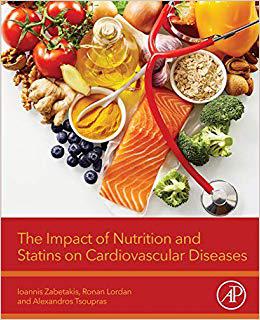**How to Calculate Nutrition Facts Recipe for Healthy Eating**
Understanding how to calculate nutrition facts recipe is essential for anyone interested in maintaining a healthy diet. This process involves determining th……
Understanding how to calculate nutrition facts recipe is essential for anyone interested in maintaining a healthy diet. This process involves determining the nutritional content of a dish, which can help you make informed decisions about what you eat. Whether you're a home cook, a professional chef, or just someone looking to improve their diet, knowing how to calculate nutrition facts recipe can be incredibly beneficial.
First, let’s break down what it means to calculate nutrition facts recipe. Nutrition facts typically include information on calories, macronutrients (such as carbohydrates, proteins, and fats), vitamins, minerals, and other essential nutrients. By understanding these components, you can better manage your dietary intake and ensure you’re meeting your nutritional needs.
To begin the process of calculating nutrition facts for a recipe, you’ll need a few key tools and pieces of information:
1. **Ingredient List**: Start by writing down all the ingredients in your recipe. Be as specific as possible, including quantities and any variations (e.g., raw vs. cooked).
2. **Nutritional Information for Each Ingredient**: You can find this information on food packaging, nutrition databases, or online resources. Websites like the USDA National Nutrient Database or apps like MyFitnessPal can be very helpful.
3. **Portion Sizes**: Determine the serving size of your recipe. This will help you calculate the nutritional content per serving.
Now, let’s go through a step-by-step guide on how to calculate nutrition facts recipe:
### Step 1: Gather Nutritional Data for Each Ingredient

For each ingredient in your recipe, find the nutritional information. This typically includes calories, macronutrients (carbohydrates, proteins, and fats), fiber, sugars, vitamins, and minerals. For example, if your recipe includes chicken breast, rice, and broccoli, you’ll need the nutritional data for each of these items.
### Step 2: Calculate the Total Nutritional Content
Once you have the nutritional information for each ingredient, you’ll need to calculate the total nutritional content for the entire recipe. Multiply the nutritional values by the quantity of each ingredient used. For instance, if your recipe calls for 200 grams of chicken breast, and 100 grams of chicken breast contains 165 calories, you’ll calculate the total calories from chicken breast as follows:
\[ \text{Total Calories from Chicken Breast} = \left( \frac{200 \text{ grams}}{100 \text{ grams}} \right) \times 165 \text{ calories} = 330 \text{ calories} \]
Repeat this process for each nutrient and ingredient.
### Step 3: Sum Up the Nutritional Values
Add up the nutritional values for all ingredients to get the total nutritional content for the entire recipe. This will give you an overview of the total calories, macronutrients, and other nutrients in your dish.
### Step 4: Determine Nutritional Content Per Serving
To find out the nutritional content per serving, divide the total nutritional values by the number of servings. For example, if your recipe serves 4 people, and the total calories for the entire recipe are 1200, then the calories per serving would be:
\[ \text{Calories per Serving} = \frac{1200 \text{ calories}}{4 \text{ servings}} = 300 \text{ calories per serving} \]
### Step 5: Adjust and Optimize
If you find that your recipe is too high or too low in certain nutrients, you can adjust the ingredients or portion sizes accordingly. This step is crucial for optimizing your recipe to meet specific dietary goals, such as reducing calorie intake, increasing protein, or balancing macronutrients.

### Practical Tips:
- **Use Accurate Measurements**: Precision is key when calculating nutrition facts. Use kitchen scales and measuring cups to ensure accurate ingredient quantities.
- **Consider Cooking Methods**: Cooking can alter the nutritional content of ingredients. For example, frying can increase fat content, while boiling might reduce certain vitamins. Adjust your calculations to account for these changes.
- **Leverage Technology**: Utilize nutrition calculation software or apps to streamline the process. These tools often come with extensive databases and can automate many of the steps involved.
By following these steps, you can effectively calculate nutrition facts recipe and gain a better understanding of the nutritional content of your meals. This knowledge empowers you to make healthier choices and tailor your diet to your specific needs. Whether you’re aiming to lose weight, build muscle, or simply eat healthier, knowing how to calculate nutrition facts recipe is a valuable skill that can support your journey to better health.